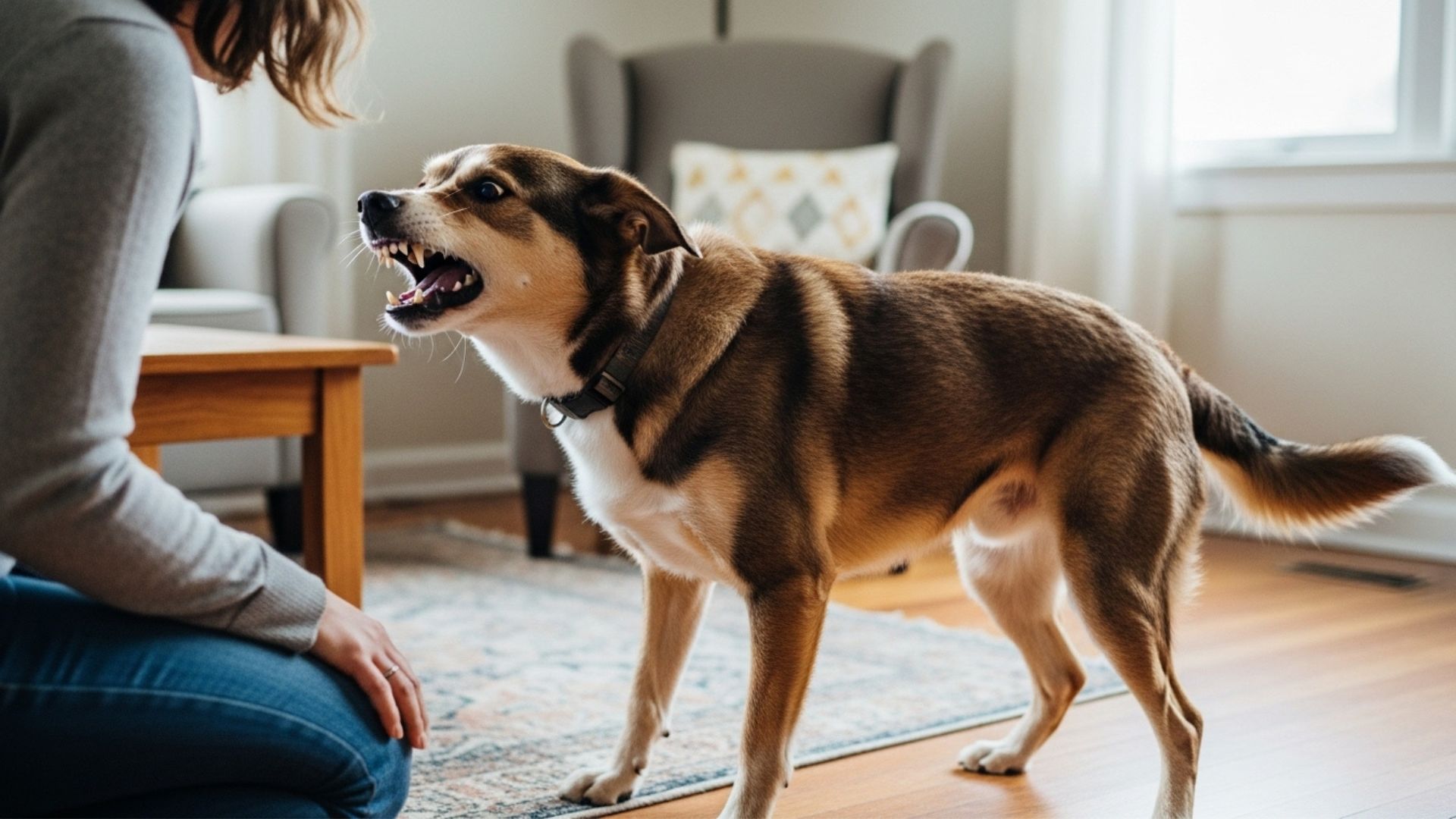Every dog deserves love—but not every breed fits every lifestyle. Some dogs, while magnificent in appearance and instinct, come with challenges that make them better suited for highly experienced owners.
Their size, energy, or guarding instincts can easily overwhelm first-timers or families with small children. Breeds like the Wolfdog or the Pit Bull Terrier, for instance, require structure, socialization, and a confident hand.
Without it, their natural strength and independence can become too much to handle. This doesn’t make them bad—it makes them specialized. Today, we’ll shed light on high-risk dog breeds that demand respect, knowledge, and commitment before ownership.
You’ll learn what makes these dogs difficult and how to identify if one might (or might not) fit into your home. Because when it comes to choosing a dog, love is essential—but understanding is everything.
Quick Fact: Dogs with poorly socialized aggression—often larger breeds or those with a history of fighting—account for the majority of severe bite incidents. Research shows that training, socialization, and responsible ownership are key to preventing risk.
High-Risk Dog Breeds You Should Avoid
1. Pit Bull
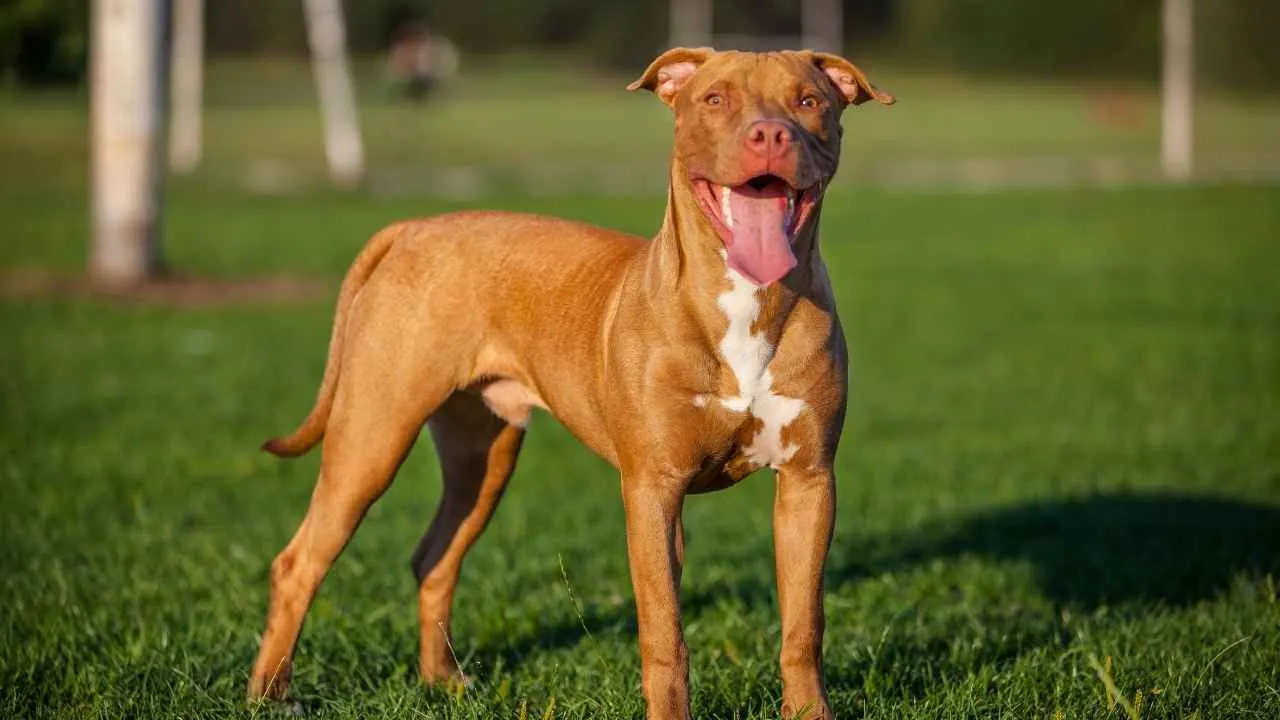
Pit Bulls are often seen as lovable, loyal companions with those big puppy eyes and heart-melting smiles. But beneath their sweet looks lies a breed with a long and controversial history.
Originally bred for bull-baiting and later for illegal dog fighting, Pit Bulls were designed for strength, stamina, and determination — traits that, in the wrong hands, can lead to danger, as per Wikipedia.
While many Pit Bulls are gentle and affectionate pets, these fighting dogs remain one of the most debated dangerous dog breeds due to their powerful build and high potential for aggression if poorly trained or neglected.
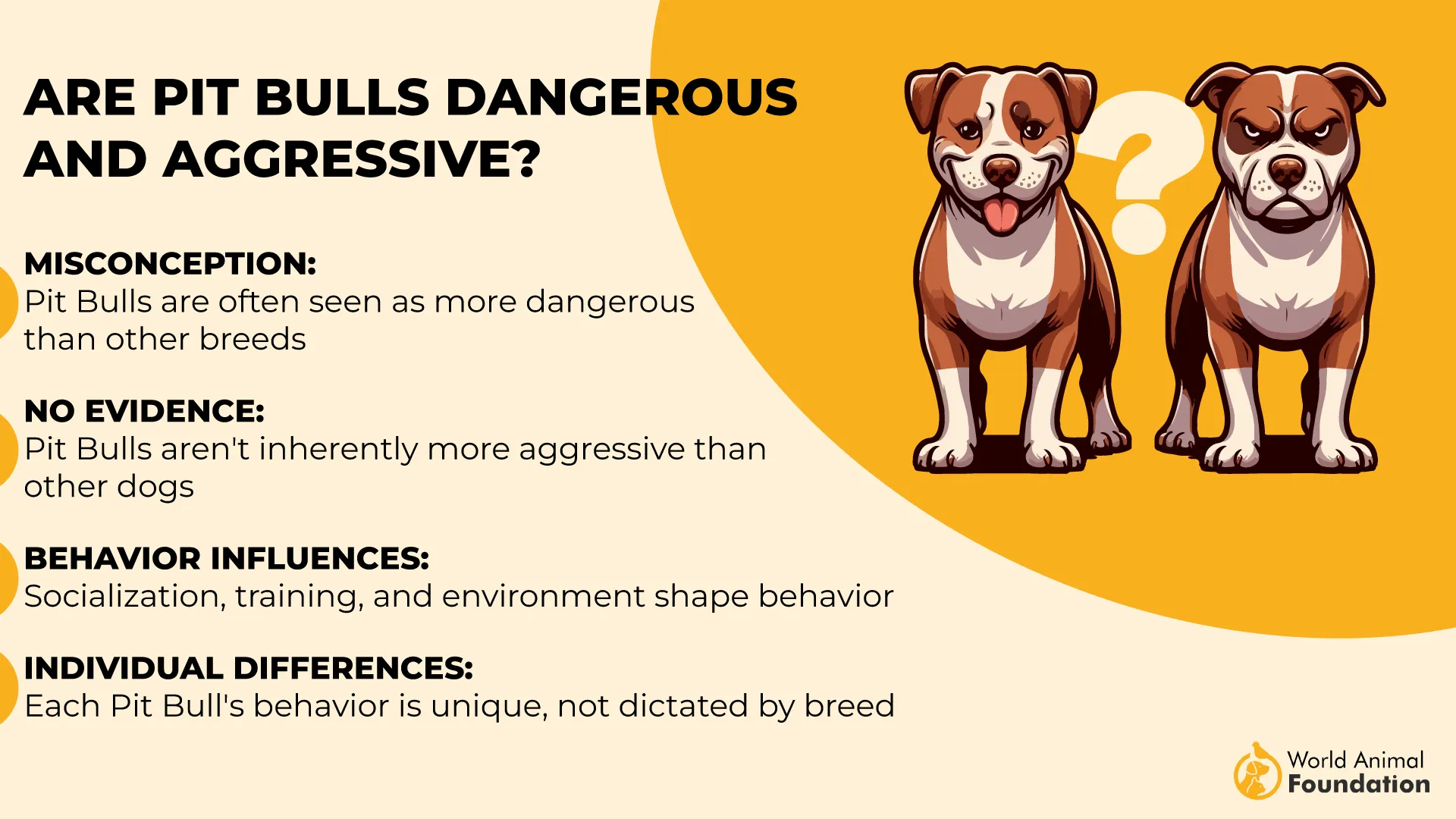
-
Bite Force: Around 235–260 PSI (pounds per square inch) — enough to make even the toughest chew toy tremble.
-
Fatalities: Between 2005 and 2017, Pit Bulls were linked to about 65% of fatal dog attacks in the U.S.
-
Best For: Experienced owners who can provide consistent training, structure, and early socialization.
Despite their rough reputation, many Pit Bulls are total sweethearts when raised in loving, responsible homes. The real issue isn’t the breed itself but who owns them and how they’re handled.
Unfortunately, misidentification makes matters worse — dogs like American Bulldogs and Staffordshire Terriers are often mistakenly labeled as Pit Bulls.
2. Rottweiler
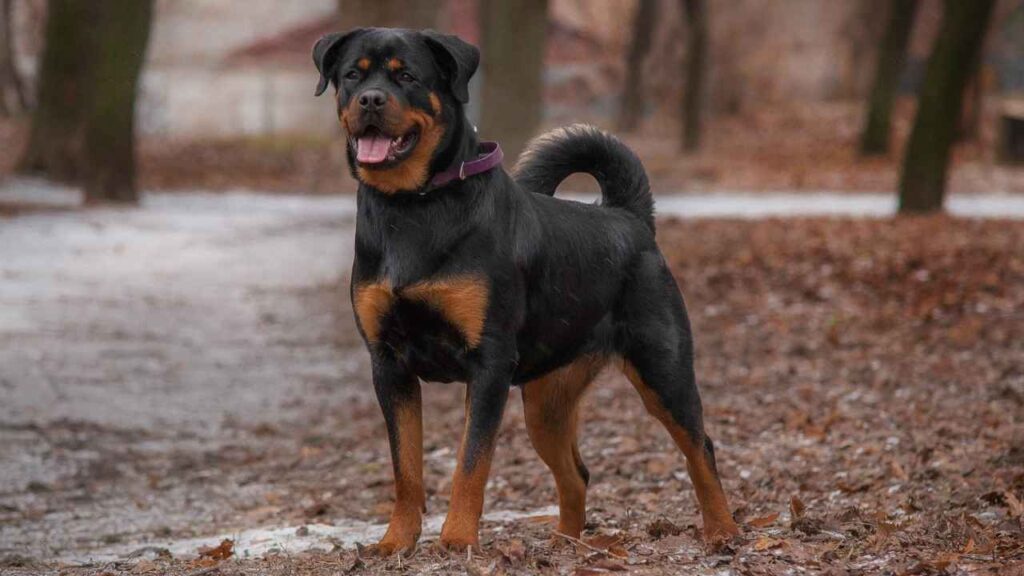
The Rottweiler was originally bred to drive and protect livestock that accompanied Roman legions across Europe. Over time, their intelligence, endurance, and protective nature made them invaluable working dogs.
Today, the “Rotties” continue to excel not only as herders but also as reliable guard dogs, police and service dogs, and affectionate family companions, Purina says.
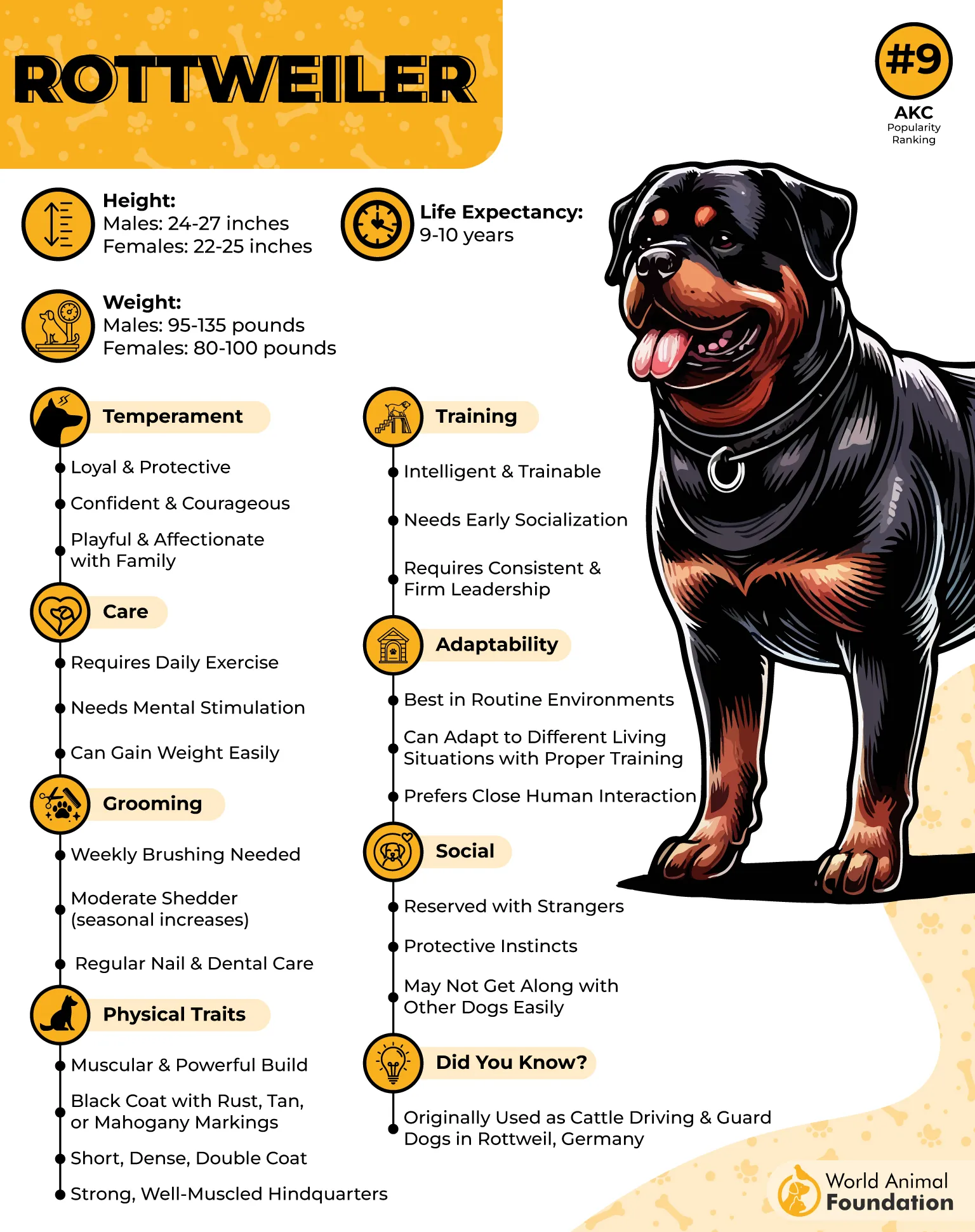
Rottweilers are the strong, silent types of the dog world — stoic, intelligent, and fiercely loyal. With their shiny black coats, expressive tan eyebrows, and noble stance, it’s no wonder they’re one of the most popular breeds globally.
They’re the kind of dogs that look like they could guard a castle… and then cuddle on the couch right after. But make no mistake — beneath that handsome face lies a natural-born protector. Their intense loyalty and guarding instincts, while admirable, can also become dangerous if not guided through proper training and socialization.
-
Bite Force: About 328 PSI, strong enough to break bones — no exaggeration there.
-
Fatalities: Linked to 45 deaths (2005–2017) in the U.S., ranking them the second most dangerous dog breed during that period.
-
Best For: Experienced owners who can provide structure, consistent training, and early socialization.
Rottweilers are known for their deep devotion to their humans — they’ll protect you as if it’s their life’s mission. However, this protectiveness can sometimes backfire, especially around strangers. A well-meaning visitor might get mistaken for a threat if the dog hasn’t learned who’s a friend or foe.
Despite their intimidating appearance, Rottweilers can be gentle giants with children and affectionate family dogs when raised with care and respect. But for first-time dog owners, they might be a bit too much muscle and mindset to handle.
🎧 Dogcast
Episode 12 — If Dogs Could Talk: Why Do Humans Go to the Gym When the Park Exists
If you don’t hear sound, tap the button above to enable audio.
3. German Shepherd
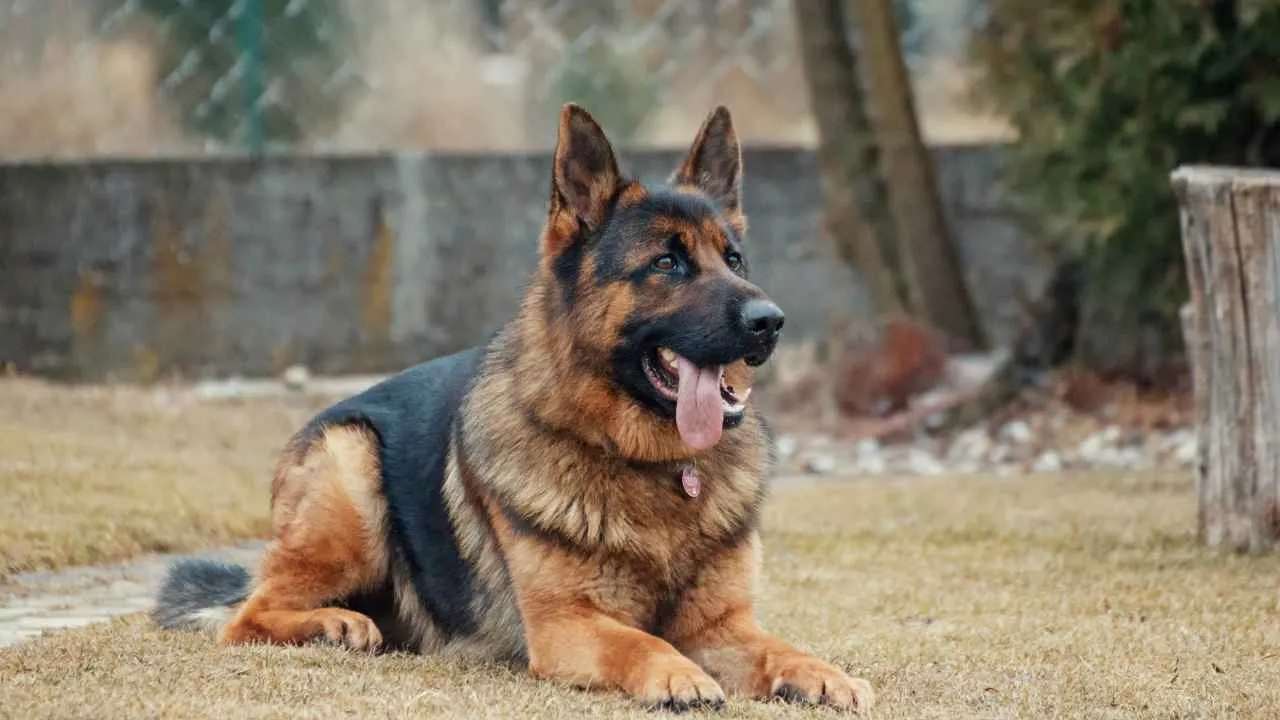
If dogs had résumés, the German Shepherds would be packed: police officer, military hero, search-and-rescue worker, loyal family guardian… You name it.
These dogs are the total package — smart, strong, and stunningly alert. But with great intelligence and power comes a need for firm, confident leadership. Without it, even this noble breed can turn into a bit of a handful.
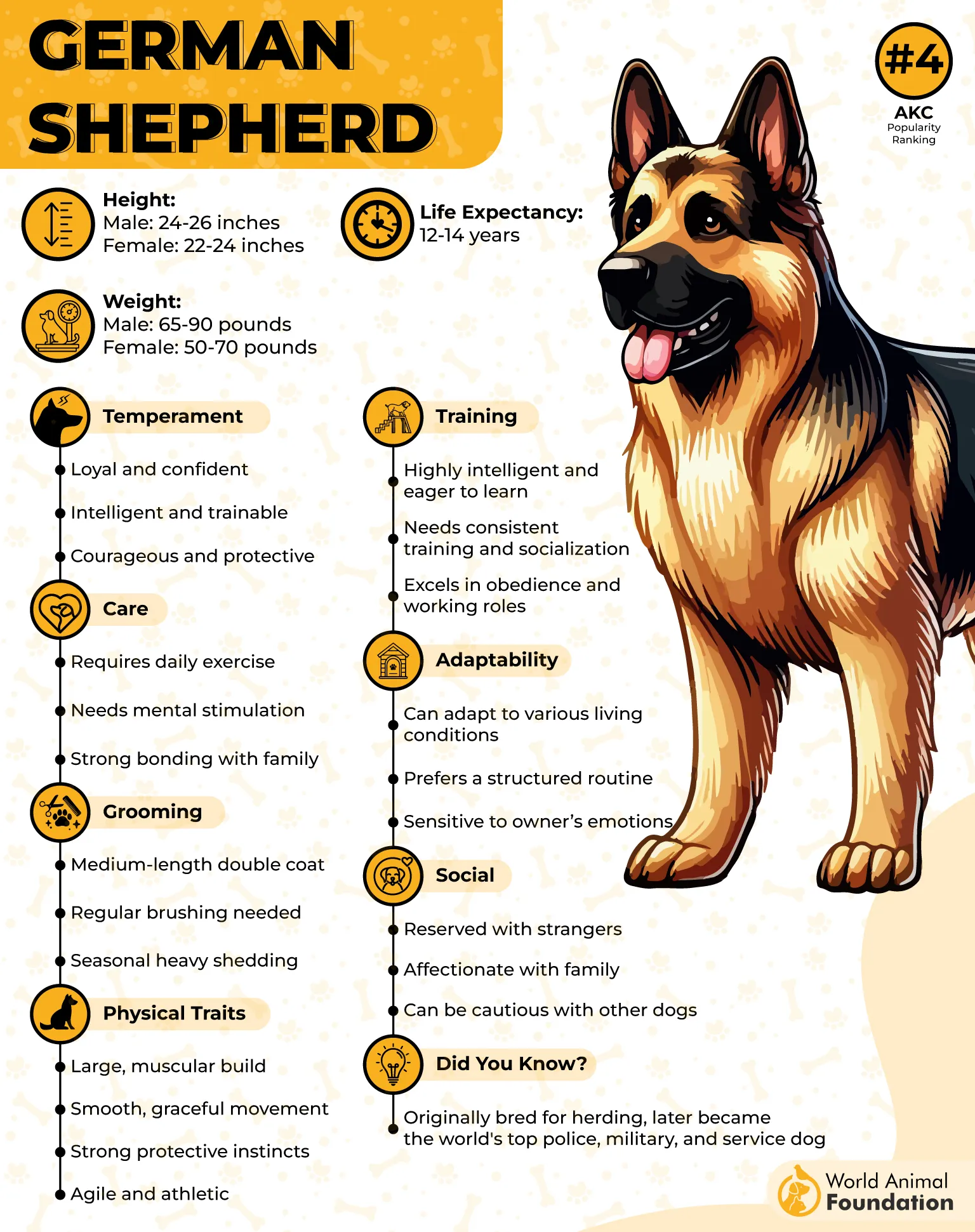
German Shepherds are natural protectors with an unmatched work ethic, which makes them excellent service dogs. However, their intensity and protective instincts can become problematic in the wrong environment or with inexperienced owners.
-
Bite Force: Roughly 238–291 PSI — enough to make any intruder seriously reconsider their choices.
-
Fatalities: Involved in 20 deaths (2005–2017), along with numerous non-lethal dog bite incidents.
-
Best For: Experienced owners or active families who can commit to consistent training and daily exercise.
Their intelligence is a double-edged sword: a well-trained German Shepherd can perform life-saving tasks or guard your home like a pro. But left untrained or under-stimulated? You might end up with a fur-covered tornado that chews through your shoes, walls, and possibly your patience.
Because of their strong prey drive, they’re not always ideal for homes with small pets — unless raised together from a young age and properly socialized.
🐾 Family Dog Compatibility Tool
Answer 7 quick questions to discover your ideal breed.
1️⃣ Who lives in your household?
2️⃣ What type of home do you live in?
3️⃣ How active is your lifestyle?
4️⃣ Does anyone in your home have allergies?
5️⃣ What dog size do you prefer?
6️⃣ How much grooming are you okay with?
7️⃣ What’s your dog ownership experience?
🐶 Your Top Matches
4. Doberman Pinscher
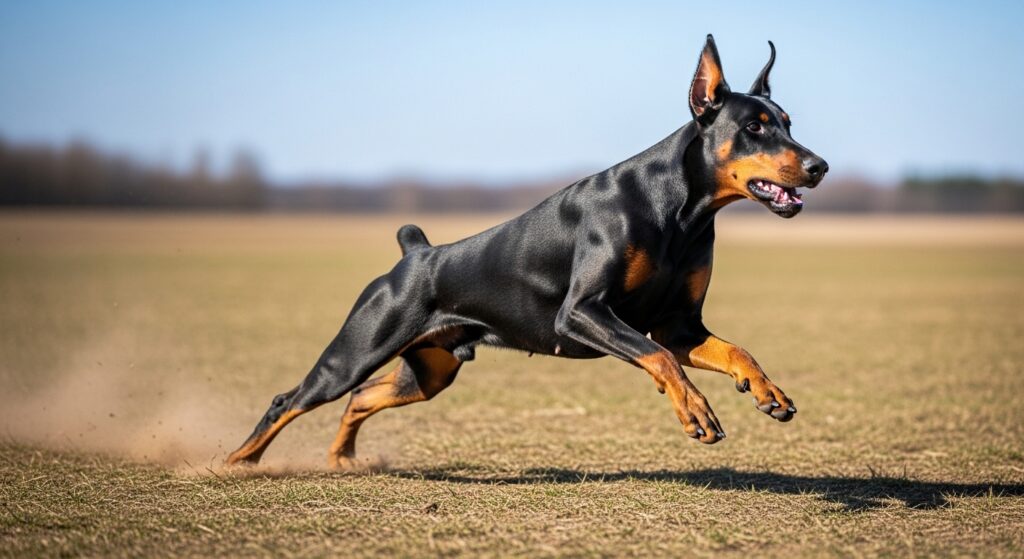
If intimidation had a mascot, it would probably be the Doberman Pinscher. With their sleek black coats, sculpted muscles, and piercing eyes, Dobermans look like they were born wearing a tuxedo — classy, confident, and ready to protect.
They’ve become the go-to “tough dog” in movies, but behind that Hollywood glare lies a loyal, affectionate, and highly intelligent companion. Dobermans were bred for one clear purpose: protection. And they take that job seriously.
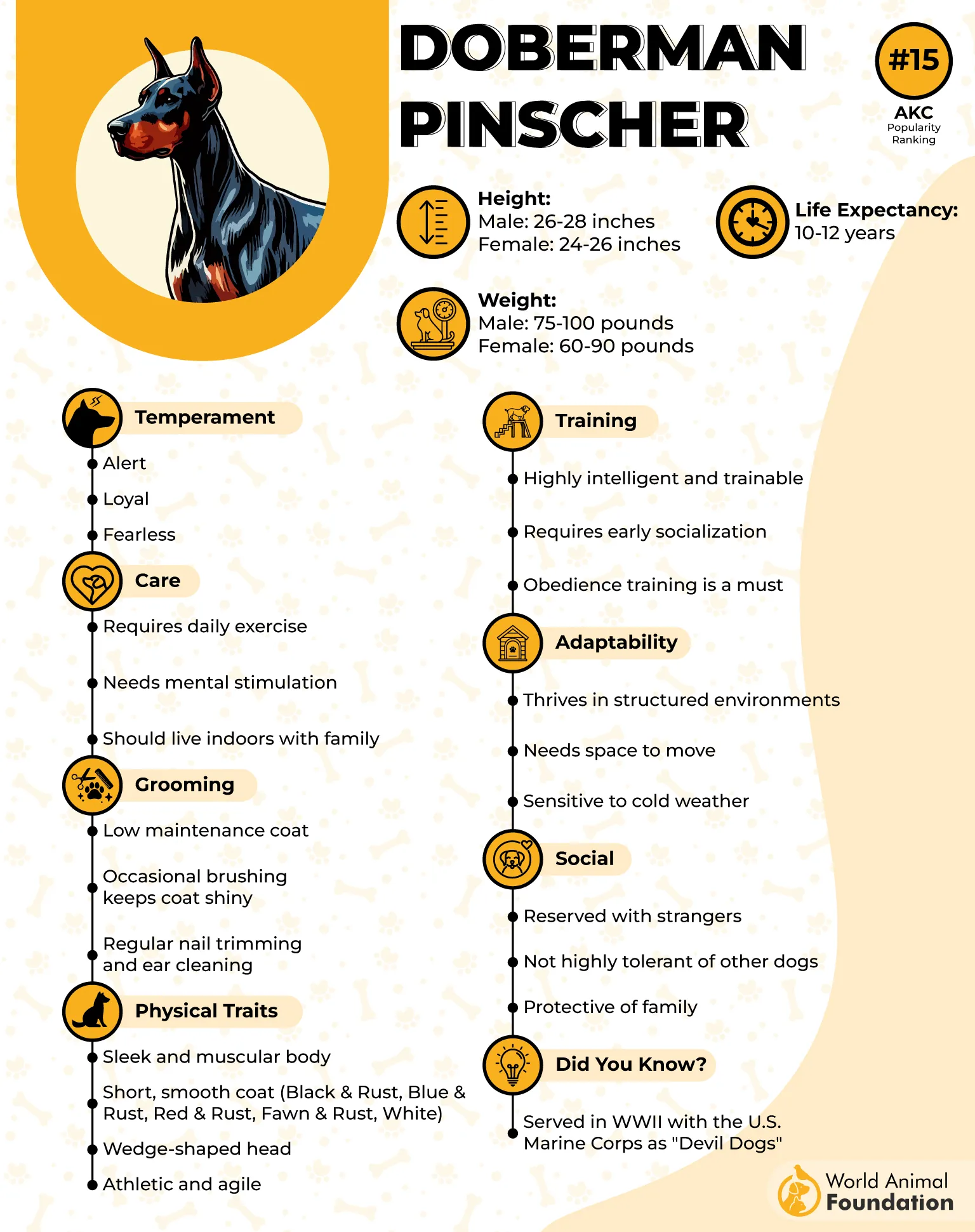
These dogs are incredibly devoted to their families — sometimes to one person in particular — and their protective instincts are unmatched. Still, that loyalty needs to be guided with patient, consistent training, or it can turn into overprotectiveness.
-
Bite Force: Commonly estimated at 305 PSI (though myths often inflate it to 600).
-
Fatalities: Responsible for 6 serious dog attacks over a 12-year period (2005–2017) — relatively low, but still worth noting.
-
Best For: Calm, confident, and experienced owners who can establish clear leadership and provide structure.
Dobermans don’t have naturally aggressive behavior toward their families — in fact, they’re known for being gentle “velcro dogs,” sticking close to their favorite human.
However, their protective drive can kick into overdrive around strangers or other pets. They don’t usually play well with other dogs and may view smaller animals as competitors or prey.
With early training, socialization, and positive reinforcement, Dobermans can be elegant, disciplined companions who guard your home and your heart with equal passion.
5. Alaskan Malamute
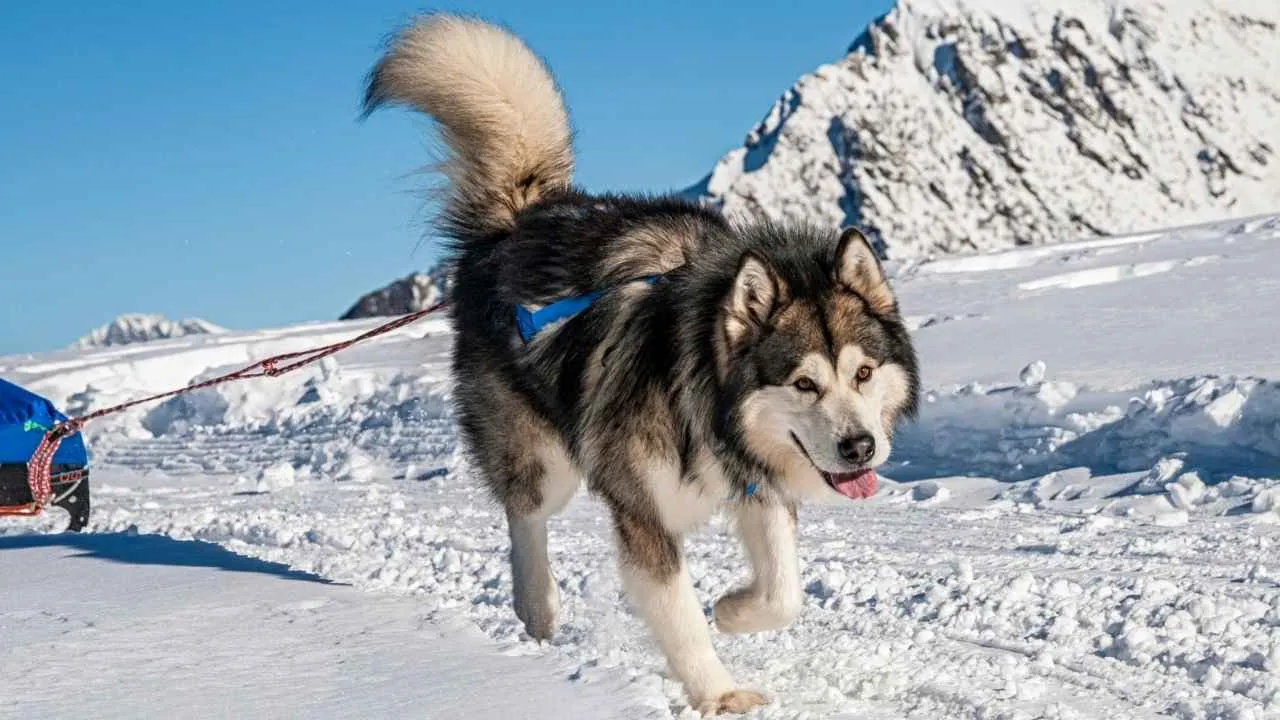
Another dangerous dog breed, the Alaskan Malamute is the heavyweight champion — built to haul sleds, not chase squirrels (well… maybe occasionally).
With their wolf-like looks and plush double coats, Malamutes are showstoppers that look like they stepped straight out of a winter postcard. But behind that cuddly, snow-loving exterior lies a strong-willed, high-energy dog that’s not for the faint of heart.
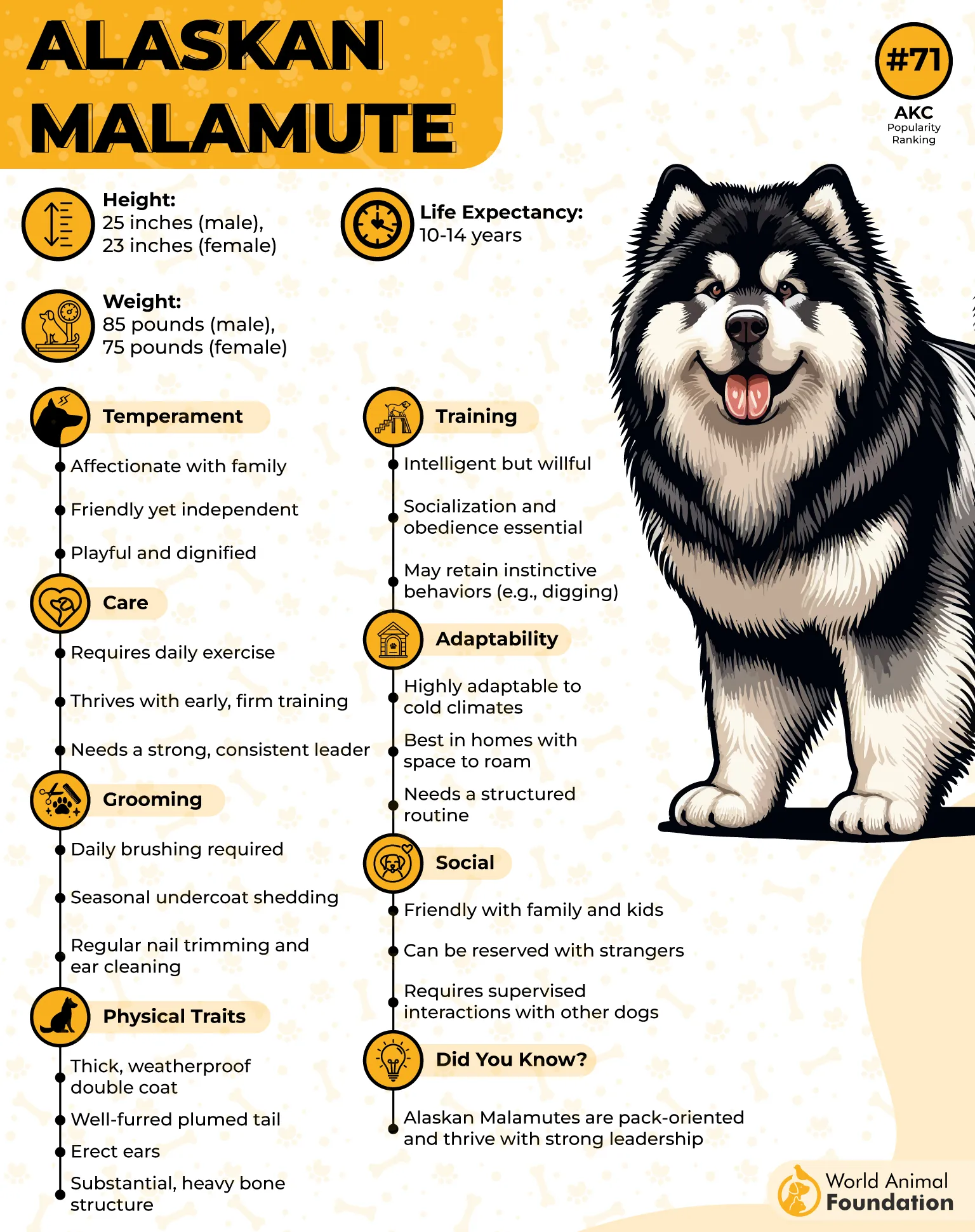
Malamutes are affectionate, playful, and loyal, but they also come with a stubborn streak as thick as their fur. They love their people, yet they’re not always eager to listen to them — especially if something more interesting (like snow, food, or freedom) catches their eye.
-
Bite Force: Around 400 PSI, giving them serious power when they need it.
-
Fatalities: Linked to 4 deaths in a 12-year period (2005–2017) — rare but not nonexistent.
-
Best For: Experienced owners who can handle large, energetic dogs and provide plenty of exercise and mental stimulation.
Alaskan Malamutes aren’t aggressive by nature, but their size, strength, and prey drive can make them risky around smaller pets or timid owners. Their stubborn personality can make training feel like a test of patience — but with the right approach, they become deeply loyal and fun-loving companions.
These dogs thrive on activity — whether it’s hiking, running, or simply bounding through snow like a furry avalanche. Without enough exercise, though, they can turn destructive (think chewed furniture and crater-sized holes in the backyard).
6. Chow Chow
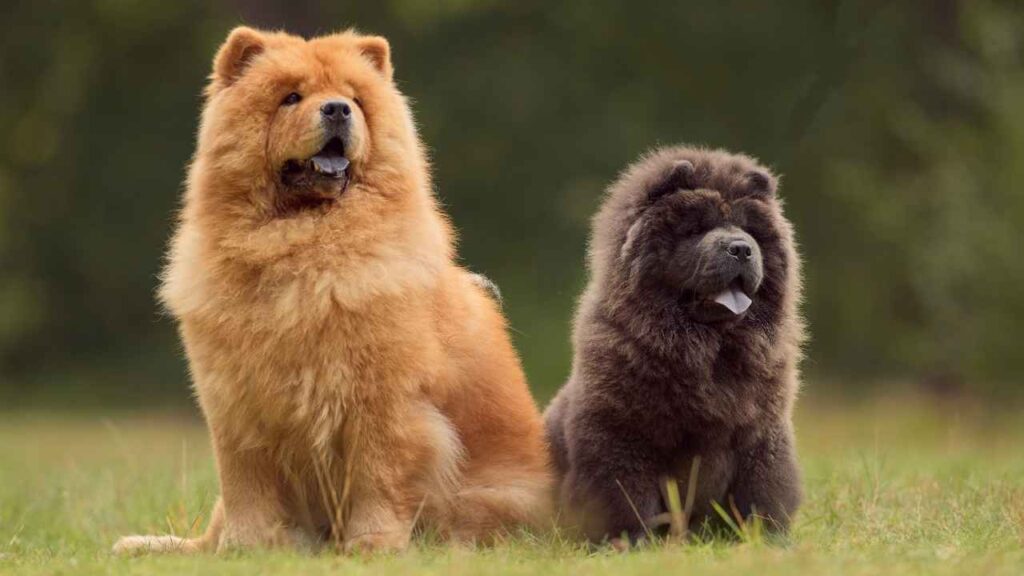
With their regal mane, serious expression, and signature blue-black tongue, Chow Chows look like miniature lions that decided to retire from the savanna and move into a cozy suburban home. They’re undeniably beautiful and dignified — but also famously aloof.
These dogs aren’t your typical “let’s play fetch for hours!” companions; they’re more like the cats of the dog world — independent, stubborn, and slightly judgmental of your life choices.
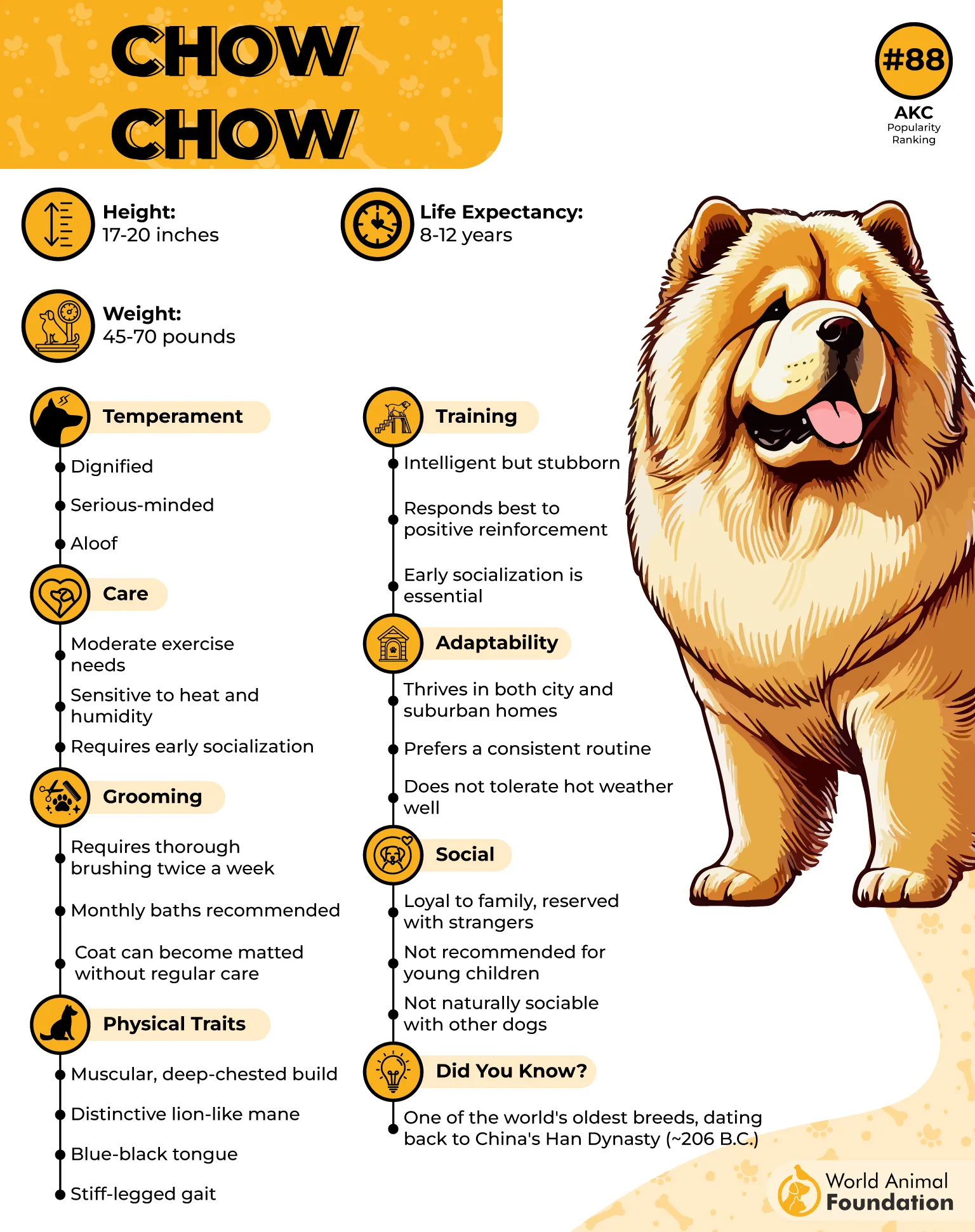
Despite their teddy-bear appearance, Chow Chows can be surprisingly territorial and strong-willed, which can lead to aggression if not handled properly, Petplan noted.
They’re loyal to their family but often suspicious of strangers, and they tend to decide who they love and when they want affection — on their own royal schedule, of course.
-
Bite Force: Around 220–250 PSI, enough to remind you they’re not just for show.
-
Fatalities: Linked to 8 deaths (2005–2017) — relatively uncommon, but still notable.
-
Best For: Experienced owners who value structure, patience, and firm (but gentle) leadership.
Chows don’t usually go looking for trouble, but they won’t back down from it either. Their protective nature and lack of tolerance for teasing or rough handling make them a poor match for families with small children or multiple pets.
But when trained and socialized correctly, the Chow Chow is a loyal, clean, and surprisingly calm housemate — almost regal in its composure.
7. Bullmastiff
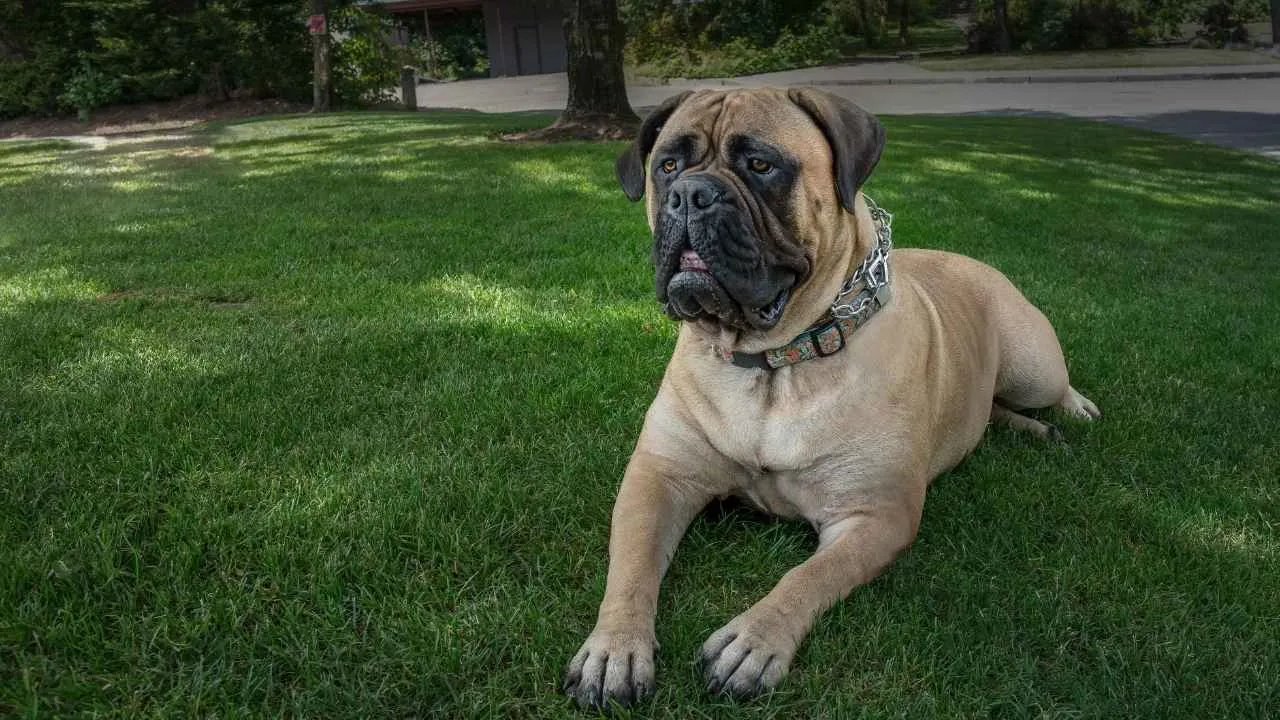
If you’ve ever seen a Bullmastiff in person, you know why intruders think twice. These dogs are massive, muscular, and look like they could bench-press most other breeds.
Originally bred to protect estates from poachers, Bullmastiffs are natural guardians: quiet, confident, and ready to act if they sense danger.
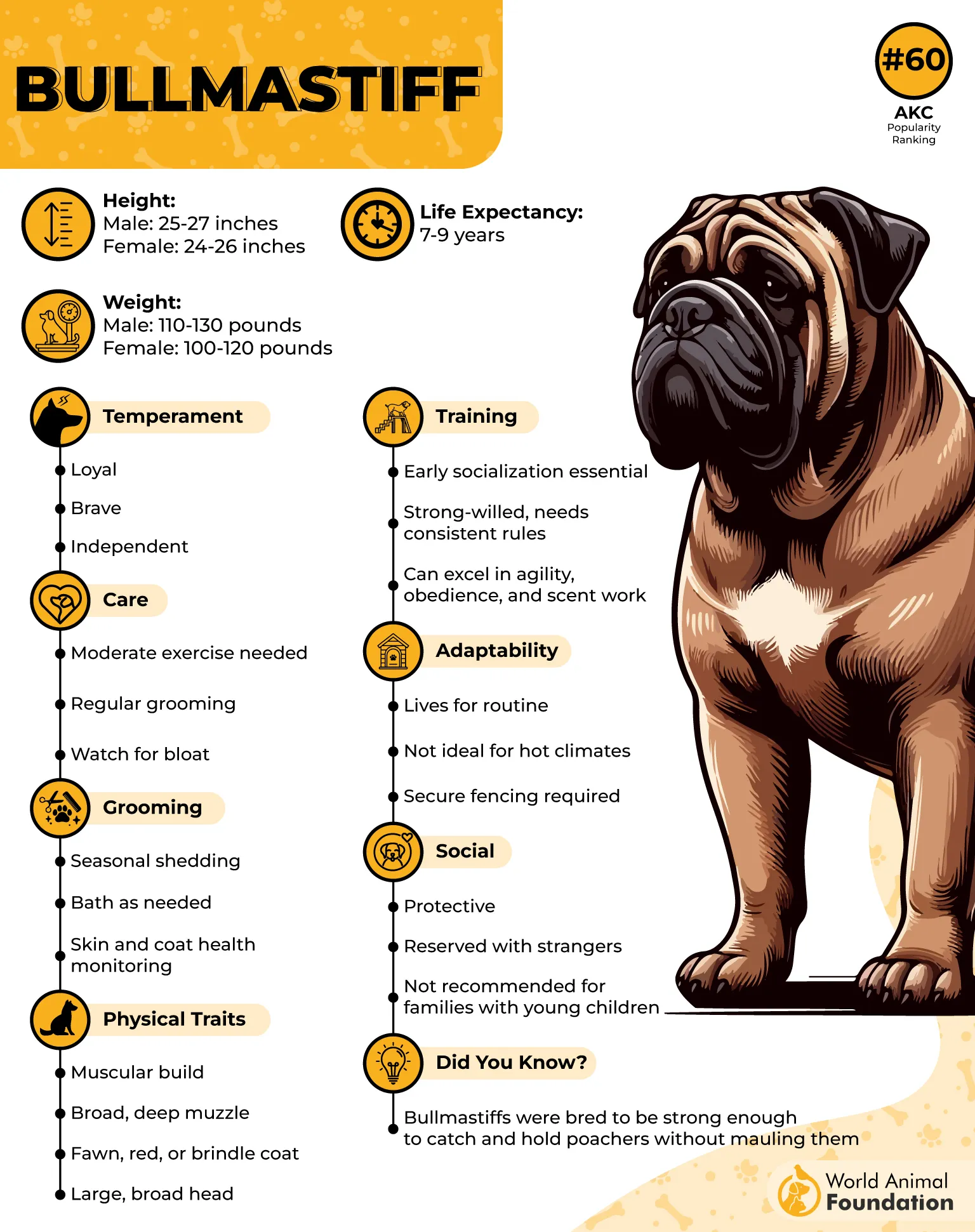
Yet beneath that powerful dog’s build lies a surprisingly gentle and affectionate heart. Bullmastiffs are calm, loyal companions who love their families — but their sheer size and strength make them a serious commitment for any owner.
These dangerous breeds don’t bark much — they’d rather handle the situation than announce it. Still, despite their calm demeanor, their power can be intimidating (and potentially dangerous) if not properly managed.
-
Bite Force: Around 552 PSI, the strongest on this list — enough to make even burglars rethink life choices.
-
Fatalities: Responsible for 14 deaths (2005–2017), though fatal attacks are rare given their typically calm temperament.
-
Best For: Experienced, confident owners who can provide steady training and early socialization.
When properly raised, Bullmastiffs are affectionate, patient, and dependable. But because of their size and strength, they’re not ideal for apartment living or first-time dog owners.
Conclusion
In final thoughts, certain high-risk dog breeds you should avoid, including British Bulldogs, Siberian Huskies, Alaskan Malamutes, and wolf hybrids, are frequently involved in dog attacks due to aggressive dogs, strong predatory instincts, or a lack of proper socialization. Male dogs and larger dogs can pose a higher risk, leading to dog bite injuries or even fatal attacks. While mixed-breed dogs and Labrador Retrievers are typically safer, any dog’s behavior can vary.
To reduce danger, ensure proper training, follow local animal control guidelines, and seek medical attention immediately if bitten. Dog bite statistics from the American Veterinary Medical Association highlight the importance of understanding a dog’s behavior, especially for aggressive breeds with a powerful bite. Consulting a dog bite lawyer may be necessary for victims.


